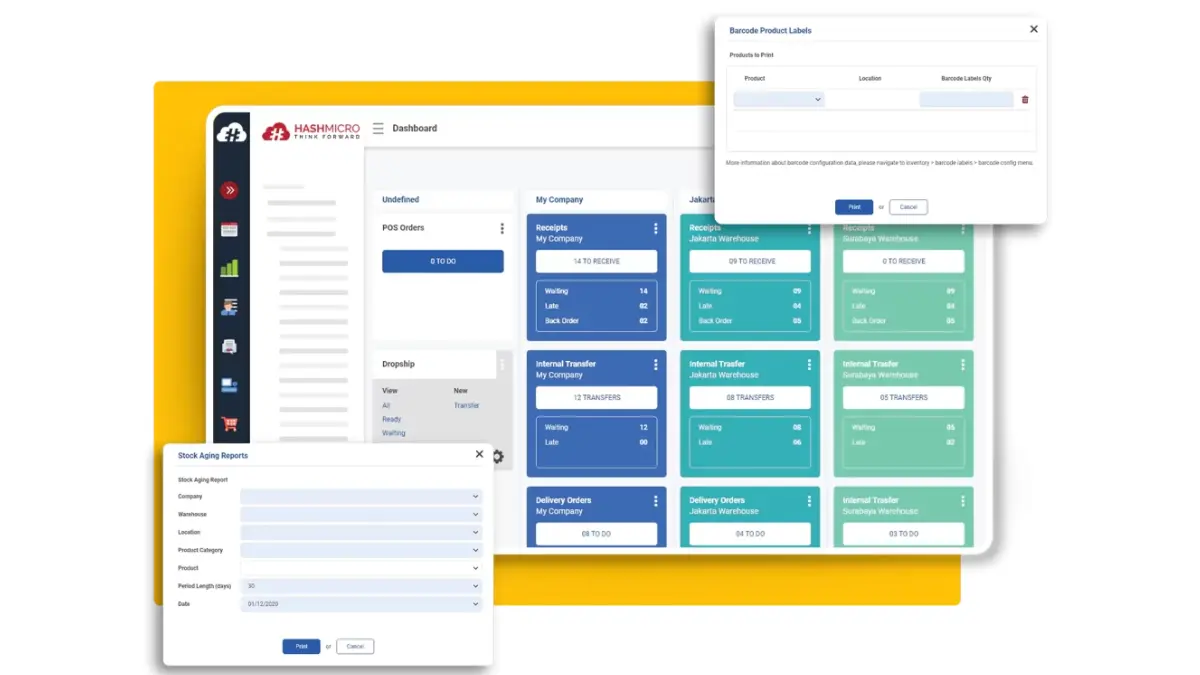Kamusta! As a business owner in the Philippines, conducting a regular inventory audit is more than a routine—it’s a strategic advantage. Imagine streamlining operations and boosting profits by enhancing your inventory practices.
Conducting inventory audits in the Philippines is crucial but fraught with challenges, such as discrepancies between recorded data and actual stock levels due to manual tracking errors, and the financial losses associated with overstocking or understocking.
This guide highlights essential tips and technologies that can revolutionize how you manage inventory in today’s competitive market. Read on to discover more!
Key Takeaways |
Table of Contents

What is an Inventory Audit?
An inventory audit involves examining a company’s inventory methods using analytical procedures, ensuring that the financial records align with the actual item counts, and maintaining accuracy using an inventory report.
This process helps to identify the immediate causes of inventory shrinkage and ensures that the optimal stock level is maintained at all times. Furthermore, purchasing software assists in planning inventory costs and managing orders more effectively, contributing to better operational control and financial oversight.
Inventory Audit Procedures
Filipino businesses must adopt inventory audit procedures that harness the latest technology to prevent inventory shrinkage. These modern approaches will enhance accuracy and reduce the potential for human error. Here’s how you can refine your inventory audits:
- Cutoff Analysis: Verify that transactions are recorded in the correct accounting period by checking the timing of receipts and shipments near the cutoff date.
- Physical Inventory Count: Perform a comprehensive count of physical stock to confirm quantities and conditions, ensuring records align with actual inventory.
- Analytical Procedures: Apply statistical methods to assess financial and inventory records, identifying discrepancies that could indicate errors or fraud.
- ABC Analysis: Categorize inventory into A, B, and C groups based on value and usage frequency to prioritize management efforts more efficiently.
- Freight Cost Analysis: Review freight costs related to inventory shipments, ensuring they accurately reflect transportation expenses and are reasonable.
- Finished Goods Cost Analysis: Examine the costs of producing finished goods, verifying they align with standard costs while accounting for any variances.
- Overhead Analysis: Evaluate overhead costs like warehousing and labor, ensuring they are allocated correctly and reflect true inventory-related expenses.
- Reconciling Items: Reconcile physical inventory counts with book records, investigating discrepancies to adjust records and maintain accuracy.
- Match Invoices to Shipping Log: Ensure all shipped goods are matched with invoices and shipping logs, confirming all dispatched items have been billed and recorded properly.
Following these procedures ensures that inventory records are accurate and reflective of actual stock levels, thereby supporting better business decisions. With advanced systems in place, businesses can ensure their inventory practices are as productive and error-free as possible.
Benefits of Conducting an Inventory Audit
Conducting an inventory audit offers several benefits that significantly enhance business operations and financial management. By ensuring accuracy in inventory accounting, such audits provide a solid foundation for calculating profits precisely. Additionally, inventory audits help prevent shrinkage and identify slow-moving or costly items.
Advantages of performing an inventory audit:
- Accurate Profit Calculation: Ensures financial records reflect true inventory values, aiding in precise profit calculations and economic decision-making.
- Enhanced Budgeting Capabilities: Provides detailed insights into actual inventory needs and stock levels, making budgeting for new purchases more accurate and less speculative.
- Identification of Inefficiencies: Reveals areas of waste such as slow-selling items, frequent stock-outs, and inaccuracies in inventory tracking or storage techniques. This information is vital for optimizing operational efficiency and cost management.
- Optimized Inventory Storage: Helps in minimizing storage costs by addressing issues like overstocking and prolonged storage times, thereby reducing expenses related to warehousing, labor, insurance, and damaged goods.
Regular inventory audits optimize the inventory cycle, businesses can streamline their operations, improve financial accuracy, and enhance overall efficiency. This proactive approach not only ensures that inventory practices are optimized but also supports strategic planning and resource management, driving better business outcomes.
Challenges of Manual Inventory Management
Manual inventory management presents challenges, especially for businesses in the Philippines that rely on spreadsheets, leading to frequent errors. Mistakes in inventory adjustments, calculations, and shipping processes result in discrepancies that affect the accuracy of both inventory data and financial reporting.
Some challenges include:
- Prone to Human Error: Manual entry and calculations can lead to significant errors that impact inventory accuracy and financial statements.
- Inefficiencies in Tracking: Manual systems often fail to provide real-time updates and tracking, leading to mismatches between physical stock and inventory records.
- Costly Mistakes: Errors in manual inventory management can result in financial losses due to mismanaged stock levels, unnecessary purchases, or lost sales due to out-of-stock situations.
Many companies in the Philippines have transitioned to automated inventory management systems to enhance accuracy and reduce human error. This shift improves operational efficiency and boosts profitability by ensuring more reliable and efficient inventory handling.
HashMicro Software to Simplify Inventory Audits
HashMicro Software provides a comprehensive solution that simplifies inventory audits, making the process more efficient and reducing errors. The software seamlessly integrates with existing business operations, offering real-time inventory tracking and automation to enhance audit practices.
Features of HashMicro Software include:
- RFID and 3D Warehouse Management: Enhances the accuracy of inventory tracking with advanced RFID technology. Visualizes stock layout using 3D warehouse mapping, providing precise location and quantity data in real-time.
- Optical Character Recognition (OCR) for Receiving: Automates the data capture process during goods receipt. Significantly reducing manual data entry errors and improving the speed of inventory updates.
- Stock Forecasting with Run Rate Reordering: Employs predictive analytics to forecast future inventory requirements. Automatically adjusts reordering rules based on consumption rates, optimizing stock levels and reducing shortages or excesses.
- Quality Control Management: Integrates quality control measures within the inventory workflow, ensuring all items meet predefined standards before being stocked. Minimizes the risk of inventory loss due to quality issues.
- Integrated Barcode & QR Code Scanning: Utilizes barcode and QR code technology for efficient inventory tracking. Speeding up the audit process and reducing errors associated with manual counting or data entry.
Implementing HashMicro’s Inventory Management System can transform inventory management by addressing traditional challenges with real-time data and automated processes. The software streamlines audits and supports broader business objectives, enhancing efficiency and profitability while maintaining a competitive edge.
Also read: A Guide Inventory List BIR Submission in Philippines 2024
Conclusion
In conclusion, the inefficiencies of manual inventory management emphasize the need for automated solutions like HashMicro Software. With real-time tracking, automated data entry, and integrated reporting features, HashMicro simplifies inventory audits and reduces errors. This system enhances operational efficiency, making it ideal for businesses aiming to improve management and reporting accuracy.
Take the first step towards transforming your inventory management by trying out HashMicro’s comprehensive software solutions. Request a free demo today! Experience firsthand how HashMicro can make your inventory audits more efficient and error-free!
Frequently Asked Questions
-
What is the purpose of the inventory audit?
The purpose of an inventory audit is to verify the accuracy of financial records and ensure the physical count of inventory matches the recorded information. It helps identify discrepancies and improve inventory management.
-
How often should you audit inventory?
Should be audited at least annually, though more frequent audits. Quarterly or bi-annually are recommended for businesses with high transaction volumes or valuable inventory to manage risks more effectively.
-
What are the risks of inventory audits?
Risks of inventory audits include human error in counting, theft, mismanagement, and discrepancies between physical stock and accounting records. This can lead to financial misreporting and operational inefficiencies

























